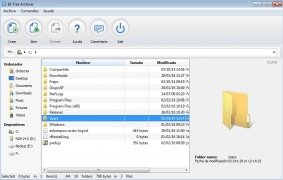

- #Best file archiver for mac how to
- #Best file archiver for mac archive
- #Best file archiver for mac password
- #Best file archiver for mac iso
#Best file archiver for mac archive
#Best file archiver for mac how to
There are both online free and offline dedicated ISO extractors for mac users, but how to choose the best ISO extractor for Mac? No worries, we have the rules, focusing on the top concerns of our users: The Best ISO Extractor for Mac 2022 Criteria to Pick a Good ISO Extractor for Mac And Windows users are allowed to unzip or extract ISO files with Windows built-in programs.įor Mac users, a mac ISO extractor is required to open and view the ISO files, and there are both online free and offline desktop tools available. Can We Extract ISO Files?įor Windows users, it is just a piece of cake to open and view ISO files, even the operating system Windows 10/8/7 can be obtained in an ISO format. An ISO file is either burned to optical disc or extracted to save certain files only. Very often, ISO file is used to launch large programs, since it can pack all the program files in a single package. ISO, also called as ISO image, is an archive file containing all the contents of every written sector on an optical disc, like CD, DVD or Blu-ray disc. Extract files from ISO, Zip, 7z, Rar, Tar and so onįree Download About ISO File What is ISO File?.The website maintains versions for download that are compatible dating back to MacOS X 10.4.Cisdem Unarchiver for Mac Best ISO Extractor for Mac 2022 The App Store fee and direct donations made through the website support the app’s ongoing development. Keka is free when downloaded directly from the developer’s website and $4.99 via the Mac App Store. Keka requires a separate app to set it as the default application for archive extraction and file decompression. Instead, create a new compression document via File > New, enter and verify a password, and then compress the file or files.
#Best file archiver for mac password
The only missing piece from Keka is offering a prompt for a password when compressing in a file format that supports it, like ZIP.

Conversely, Keka can assemble sequentially numbered archive segments created using standard methods. Even with the speed and storage of the modern internet, you may still balk at requiring people download a monolithic 50GB archive and prefer to offer 50 numbered downloads of 1GB each. This requires using a supporting format, but several allow this, such as ZIP, bzip2, and gzip. Keka has a feature that at one time was absolutely necessary, as I mentioned earlier, but can still be helpful today: you can set it to break archives into chunks of a specific size. You can pick a default format for compression and set a huge number of other preferences that fit your requirements. Those with specific requirements in creating archives can dial in just what they want those who receive a file or archive and are trying to extract it into a usable format need to know almost nothing to proceed except how to drag and drop or double-click. Keka also manages the neat trick of having a deeply technical purpose, and yet being usable without special training. First released in 2009, the app continues to mature, and the developer adds formats and additional features on a constant drumbeat. Keka is a perfect partner for any Mac owner’s needs for file archiving and extraction. Email offers endless ways to ruin file attachments in transmission, and compressed file archives typically bypass those problems. We live in modern times, but file archives for organization, proper transmission without loss, compression, and encryption still abound for those who use desktop computers and server systems. When bulletin board systems and the nascent internet let us upload files, the low speeds and scarce storage meant every bit-not just byte-counted. Long ago, we compressed, sliced, and diced large document files and applications, stuck them on series of 1.44MB floppies, and passed them around.


 0 kommentar(er)
0 kommentar(er)
